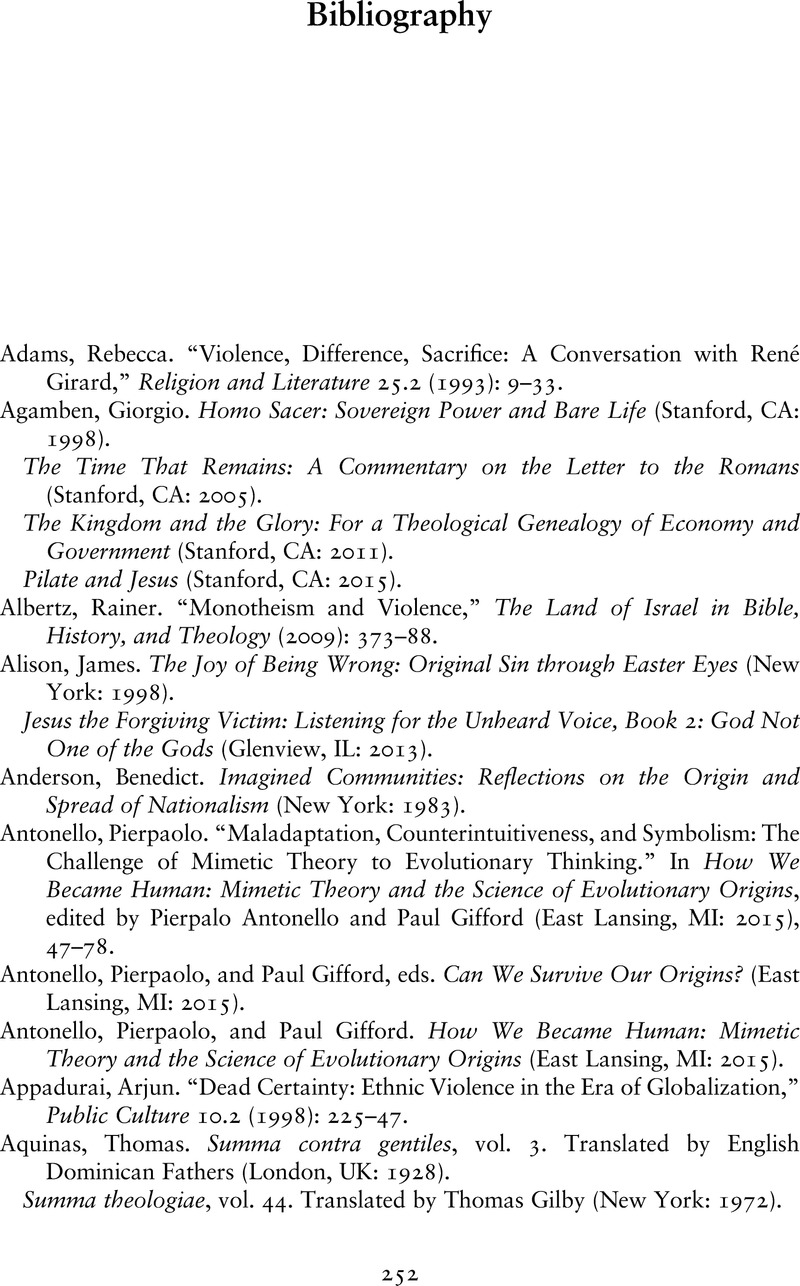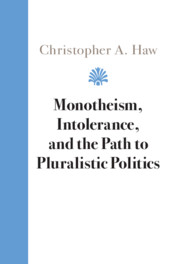Book contents
- Monotheism, Intolerance, and the Path to Pluralistic Politics
- Monotheism, Intolerance, and the Path to Pluralistic Politics
- Copyright page
- Contents
- Preface
- Abbreviations
- Introduction
- 1 Pluralism’s Requisite Intolerance
- 2 Girard’s Mimetic Theory and Monotheism’s Ambivalent Effects
- 3 Monotheism and the Monopoly on Violence
- 4 Containing Violence and Two Entirely Different Kinds of Religion
- 5 Polytheism and the Victim in Ancient Egypt
- 6 A Political Theology of the Mosaic Distinction
- 7 Jesus Christ and Intolerance
- 8 Conclusion
- Bibliography
- Index
- References
Bibliography
Published online by Cambridge University Press: 04 June 2021
- Monotheism, Intolerance, and the Path to Pluralistic Politics
- Monotheism, Intolerance, and the Path to Pluralistic Politics
- Copyright page
- Contents
- Preface
- Abbreviations
- Introduction
- 1 Pluralism’s Requisite Intolerance
- 2 Girard’s Mimetic Theory and Monotheism’s Ambivalent Effects
- 3 Monotheism and the Monopoly on Violence
- 4 Containing Violence and Two Entirely Different Kinds of Religion
- 5 Polytheism and the Victim in Ancient Egypt
- 6 A Political Theology of the Mosaic Distinction
- 7 Jesus Christ and Intolerance
- 8 Conclusion
- Bibliography
- Index
- References
Summary

- Type
- Chapter
- Information
- Monotheism, Intolerance, and the Path to Pluralistic Politics , pp. 252 - 269Publisher: Cambridge University PressPrint publication year: 2021



